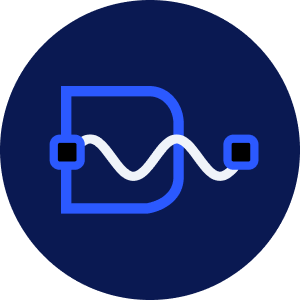- AI Models
- February 27, 2023
LLaMA - Advancing Open Science with a Foundational Large Language Model
Meta, in line with its commitment to open science, has unveiled LLaMA (Large Language Model Meta AI), a cutting-edge foundational large language model that empowers researchers to push the boundaries of AI research. With a focus on accessibility and democratizing access to the field, LLaMA's smaller yet highly performant models enable researchers without extensive infrastructure to study and explore the potential of large language models. This article delves into the technical details, significance, and potential use cases of LLaMA, shedding light on its role in advancing the subfield of AI.
Technical Details
LLaMA encompasses a series of models available in varying sizes, including 7B, 13B, 33B, and 65B parameters. By training smaller foundation models like LLaMA, researchers gain the advantage of reduced computational requirements, making it easier to test new approaches, validate existing work, and explore novel use cases. These foundation models, trained on a vast set of unlabeled data, offer a solid base for fine-tuning across diverse tasks. Meta is making LLaMA accessible alongside a comprehensive model card, providing insights into the model's construction and aligning with Responsible AI practices.
Capabilities
Large language models, such as LLaMA, have demonstrated remarkable capabilities in generating creative text, solving mathematical problems, predicting protein structures, and answering comprehension questions. LLaMA's smaller size, combined with its training on 1.4 trillion tokens, enhances its adaptability and ease of retraining for specific use cases. This versatility positions LLaMA as a valuable resource for researchers in the pursuit of advancements in natural language processing.
Limitations
While LLaMA (Large Language Model Meta AI) offers significant advantages, it is important to be aware of its limitations to make informed decisions about its implementation:
- Computational Resources LLaMA is designed to be more resource-efficient, allowing researchers with limited infrastructure access to study and experiment with large language models. However, it is important to note that even with these improvements, LLaMA still requires substantial computing power and resources for training and fine-tuning.
- Model Biases Like other large language models, LLaMA may inherit biases from the training data, potentially resulting in biased outputs. Addressing these biases and ensuring fairness in language generation is an ongoing area of research and development.
- Toxicity and Hallucinations Although LLaMA demonstrates impressive capabilities, it is not immune to generating toxic or inaccurate text. Continuous efforts are required to enhance the model's robustness, reduce toxicity, and mitigate the risk of generating misleading or false information.
- Limited Research Access While Meta aims to promote open science, access to LLaMA is currently granted on a case-by-case basis to academic researchers, industry research laboratories, and organizations in government and civil society. This limited access may influence the breadth and depth of research conducted on LLaMA, necessitating a broader accessibility framework in the future.
Despite these limitations, Meta is actively committed to refining and optimizing LLaMA based on user feedback. By continuously striving for improvement, the goal is to provide users with a more reliable and responsible AI experience when leveraging LLaMA's capabilities.
Use Cases
LLaMA's potential spans across multiple domains and research areas. Some notable use cases include:
- Text Generation and Comprehension LLaMA's recursive text generation approach enables researchers to explore creative text generation, improve language comprehension models, and enhance reading comprehension algorithms.
- Bias and Toxicity Mitigation The AI community faces challenges related to bias, toxic comments, and hallucinations in large language models. LLaMA serves as a foundation model that researchers can leverage to develop and test new techniques for reducing these risks, ensuring the responsible use of language models in real-world applications.
- Multilingual Applications LLaMA's training on text from the top 20 languages, including those with Latin and Cyrillic alphabets, opens avenues for research in multilingual applications. Researchers can investigate cross-lingual understanding, machine translation, and language-specific challenges using LLaMA as a foundational resource.
- Ethical AI and Responsible Language Modeling Meta acknowledge the need for clear guidelines regarding responsible AI, especially in large language models. By sharing the code and evaluations on model biases and toxicity, LLaMA encourages collaborative efforts among academia, civil society, policymakers, and industry to address ethical concerns and promote responsible language modeling.
Frequently Asked Questions
Is LLaMa free to use?
How do I access the LLaMa model?
What is the difference between GPT and LLaMa?
Is LLaMa available for commercial use?



